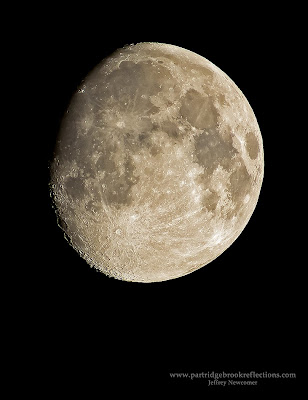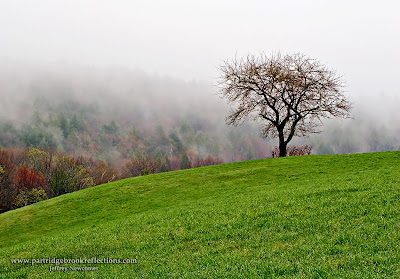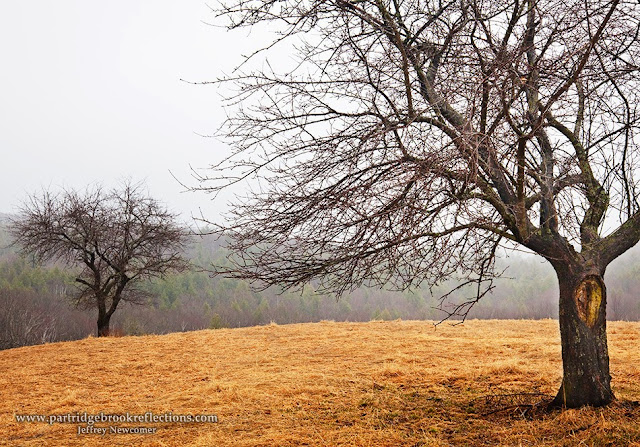 |
| Pasture Arch, Walpole NH |
 |
| Rye Beach, NH, July |
 |
| Milky Way over my Driveway |
The Galactic Season
 |
| Alyson's Orchard Walpole, September |
 |
| Spofford Lake, Spring Arch |
The Moon
 Star field observation starts with an understanding of the location of the moon. Each month I note on my calendar the few days around the new moon. Although a little peripheral moonlight can help illuminate foreground elements, the new moon is generally the best time to clearly capture the stars in their full glory. Around the time of the new moon, I start checking the weather for the best chances of clear sky's. It is exciting to find a crystal clear night on just the right day, but I'm embarrassed to admit that I am often equally thrilled to see clouds obscuring the sky, giving me a reasonable excuse to rush off to bed.
Star field observation starts with an understanding of the location of the moon. Each month I note on my calendar the few days around the new moon. Although a little peripheral moonlight can help illuminate foreground elements, the new moon is generally the best time to clearly capture the stars in their full glory. Around the time of the new moon, I start checking the weather for the best chances of clear sky's. It is exciting to find a crystal clear night on just the right day, but I'm embarrassed to admit that I am often equally thrilled to see clouds obscuring the sky, giving me a reasonable excuse to rush off to bed.The Right Spot
I am always looking for good locations to capture the Milky Way. There are three basic requirements
South Facing View.
The Milky Way moves across the sky from Southeast to Southwest and a prime location must have a clear view to the horizon in that direction. I spend time scanning my favorite locations, looking for those with the proper orientation.
Avoiding Light Pollution.
 |
| Brattleboro Light Pollution |
Light pollution is persistent problem. Even out in the country, it is amazing how much artificial light will show up when I am shooting with ISOs from 2500-3200 at f2.8 and 20-30 second exposures.
 |
| Martha's Vineyard, Ocean Dark |
A faint glow on the horizon,which is barely perceptible to the unaided eye, can look like a blazing sunrise when captured in a long exposure. I try to get away from major centers of civilization, but even a small village like Spofford can throw up a surprising amount of light. I envy my friends who are fortunate to live near the ocean, where views out to sea are relatively clear of artificial light. For those of us who are land-locked all we can do is get as far away from people as possible, minimize the glare in Photoshop and tell everyone that that orange patch is actually the first glow of sunrise.
Foreground
 |
| Jaffrey Silos |
 |
| Chesterfield Town Hall |
My Walpole Apples
 For years I have been attracted to a couple of lone apple trees which sit out in the middle of a lovely pasture in Walpole New Hampshire. I have shot the trees in various seasons and conditions of light, but I have always felt that they might serve as interesting foreground subjects for a Milky Way photograph. The trees are isolated in the middle of a large pasture on the crest of a hill looking off to the south. I knew I would have freedom to move around the trees to find the best angle under the arch of the Milky Way. I had shot stars from edge of this location before, but I had never ventured out to get close enough to bring the trees into the foreground. About one week ago I finally got my chance.
For years I have been attracted to a couple of lone apple trees which sit out in the middle of a lovely pasture in Walpole New Hampshire. I have shot the trees in various seasons and conditions of light, but I have always felt that they might serve as interesting foreground subjects for a Milky Way photograph. The trees are isolated in the middle of a large pasture on the crest of a hill looking off to the south. I knew I would have freedom to move around the trees to find the best angle under the arch of the Milky Way. I had shot stars from edge of this location before, but I had never ventured out to get close enough to bring the trees into the foreground. About one week ago I finally got my chance. 
The Right Day and Time
 |
| Photographer's Ephemeris, Walpole Apples |
I used the Photographer's Ephemeris to find the nights in May when the Moon would not be an issue. TPE is THE essential piece of software for anyone wanting to predict the locations of the Sun and Moon from any location and on any day. My current favorite program for predicting the
 |
| PhotoPills |
I knew the what, the where and the when, all that remained was the fourth "W", the weather.
The forecast was for one clear night before a warm front was predicted to cloud the skies for several days. I took a nap in the
| Dublin Lake & Too Distant Monadnock |
In the Field
 |
| Walpole Apple, We'll Call It Sunrise |
The night was lovely. With the exception of a few clouds on the southern horizon, the sky was crystal clear and peaceful, although, as always, it was a bit spooky standing alone in the inky dark with nothing but the hooting of owls and the howling of distant (hopefully) coyotes to keep me company. Fortunately I was too busy to spend much time thinking about being stalked by ravenous preditors, or shambling zombies. The Milky Way was beautiful and easily visible to the unaided eye allowing me to position the camera to capture the Apple tree nestled under the arch, but even when maximally dark adjusted my eyes could not remotely appreciate the intensity and depth revealed by the camera sensor. After a few experimental shots, I settled on ISO 2500, f2.8 and a 20
 |
| Cosmic Apple, Walpole, Light Painted |
 |
| Light Painted Apple, Walpole, NH |
 |
| Connecticut River, Chesterfield, NH |
I hope this discussion provides a helpful overview of how a relative new-bee might approach star field photography. With just a little care, the technical aspects are actually quite simple. The biggest challenge is to haul yourself out of bed to get to the right place at the right time with the right weather.
And watch out for the Zombies!
Other Articles From My Blog:
Night Time Photography, Searching for the Milky Way
April 2013
Look to the foreground in Milky Way Photography
June 2014
Valuable References:
Night Sky Photography, Aaron Priest
Aim for the Stars, Mike Blanchette,
New England Photograhy Guild
Jeffrey Newcomer
Partridgebrookreflections.com

Great post, doc! Your photos and instructions makes me want to get out there and try it for myself.
ReplyDeleteThanks Rob. That's the idea. Have fun.
DeletePerfection photo and article . So much thanks for shared .
ReplyDelete